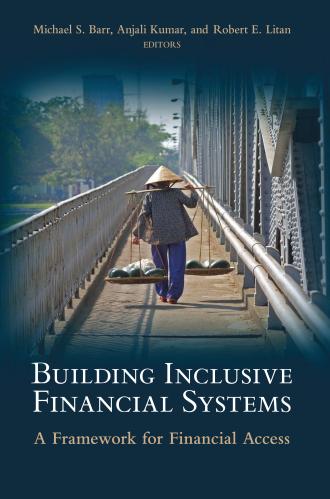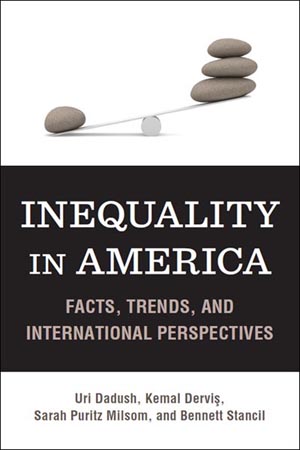Studies in this week’s Hutchins Roundup find the Fed’s Secondary Market Corporate Credit Facility successfully eased corporate borrowing, U.S. and E.U. COVID-19 fatality rates are due to differences in health policy, and more.
Want to receive the Hutchins Roundup as an email? Sign up here to get it in your inbox every Thursday.
New Municipal Finance Newsletter
The Hutchins Center has launched a quarterly municipal finance newsletter. Read the first edition here, and sign up to receive future editions here.
The Fed’s corporate bond buying successfully cut corporate borrowing costs
The Federal Reserve launched its Secondary Market Corporate Credit Facility (SMCCF) on March 23, moving to buy corporate bonds on the secondary market for the first time. It expanded the program on April 9 to include ‘fallen angels,’ companies that had recently downgraded from investment grade. Simon Gilchrist from NYU and co-authors find that the two announcements reduced credit spreads (the difference in yield between a corporate bond and comparable Treasury) on eligible bonds between 20 and 70 basis points. They also find that the March announcement reduced bid-ask spreads by approximately 10 basis points; the April announcement had no effect on bid-ask spreads. Actual bond purchases in June and July lowered credit spreads by another 5 basis points and bid-ask spreads by 2 basis points. Examining the ‘fallen angels,’ the authors find that the March announcement initially had a substantial negative effect, increasing their credit spread by about 340 basis points. When the Fed expanded the program to include these bonds, about two-thirds of this increase was reversed. All told, the authors argue that market’s response to the SMCCF is evidence that the program succeeded in its goal of making it easier for companies to borrow during the COVID crisis.
Differences in health policy explain the US/EU gap in COVID-19 fatalities
Why have the United States and European Union experienced such differing COVID-19 fatality rates? To control for variation in population size and timing of the pandemic across the two regions, Ainoa Aparicio of the University of Turin and Shoshana Grossbard of San Diego State compare U.S. states and European countries using reported COVID-19 deaths 50 and 100 days after the epidemic’s onset. After accounting for demographic, economic and political factors, the authors find that fatalities 100 days after onset are 1.3 % higher in a U.S. state than in an E.U. nation. The remaining gap is entirely explained by differences in health policy— including early lockdowns, testing availability, and number of hospital beds. “It appears that U.S. states have more deaths from COVID than E.U. countries due to a tendency for U.S. states to rely on less effective health-related mechanisms either as a response to the epidemic (lockdowns or tests) or prior to the epidemic (hospital beds),” the authors say.
Immigrants are less likely to participate in welfare programs
Welfare program use is approximately 2.3 percentage points lower for low-education immigrant households than low-education native households – a phenomenon that is not well understood. Analyzing these households between 1995 and 2018, Xiaoning Huang and Neeraj Kaushal at Columbia and Julia Shu-Hua Wang at the University of Hong Kong find that only a modest amount of the gap is explained by policies that limit or discourage immigrants from applying for public benefits. Furthermore, they note that although the two sets of households differ in many demographic characteristics, those differences also don’t explain the gap in take-up of welfare benefits. In fact, they find that if immigrant households had the same educational, ethnic/racial, geographic, and other characteristics as native households, their take-up rate would be even lower. Instead, immigrants appear less likely to take up benefits than non-immigrants given any set of characteristics. The authors also find that immigrants’ participation in welfare programs is more sensitive to the business cycle than that of non-immigrants, suggesting that immigrant dependence on the safety net is more likely to be temporary and linked to the economy.
Chart of the week: A growing share of young adults are living with their parents
 Chart courtesy of Jim Reid, Deutsche Bank
Chart courtesy of Jim Reid, Deutsche Bank
Quote of the week:
“The effective lower bound on interest rates has become a feature of our monetary policy. This has three important consequences. The first consequence is that fiscal policy has become more important as a macroeconomic stabilization tool. When natural rates are low and policy rates are constrained by the lower bound, a more accommodative fiscal policy is needed to lift the economy out of a low-growth, low-inflation trap,” says Isabel Schnabel, Member of the Executive Board of the European Central Bank.
“The second consequence is that fiscal policy has not only become more important, but also more effective. There is a wealth of research showing that fiscal multipliers are larger at the effective lower bound….
“The third consequence is that, all other things being equal, the cost of debt has fallen. The extent of this drop has been such that countries may no longer need to run primary budget surpluses to stabilize or reduce their debt burden over time as long as interest rates are lower than nominal growth rate.”










Commentary
Hutchins Roundup: SMCCF, COVID fatality rates, and more
September 17, 2020